

Environmental Issues.



| Mrs. o' Shea's 1st Class visited Turlough House last week. They enjoyed their museum tour. They learned all about St. Brigid and they each made a St. Brigid's Cross to bring back to school. | |
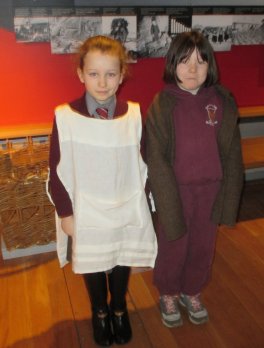 |
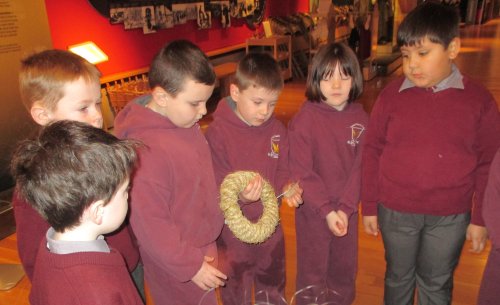 |
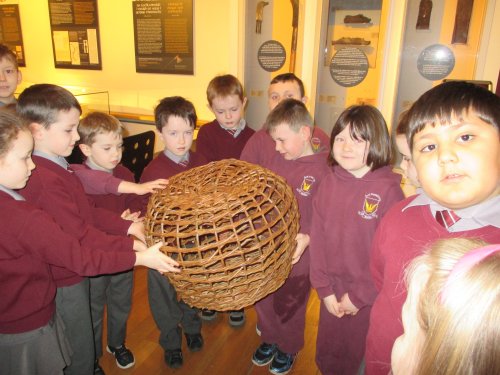 |
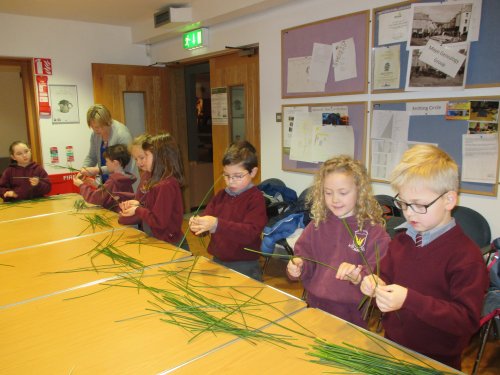 |
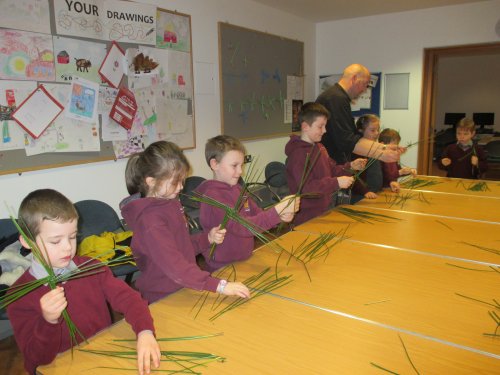 |
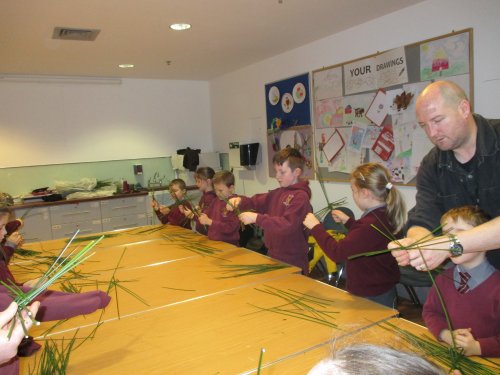 |
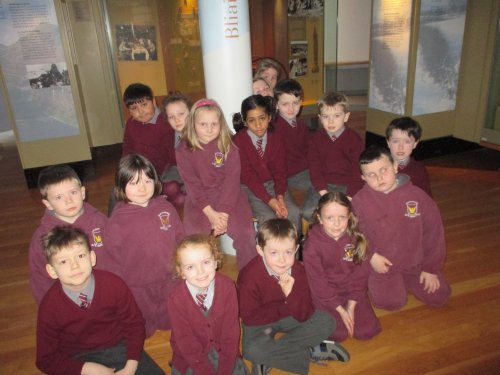 |
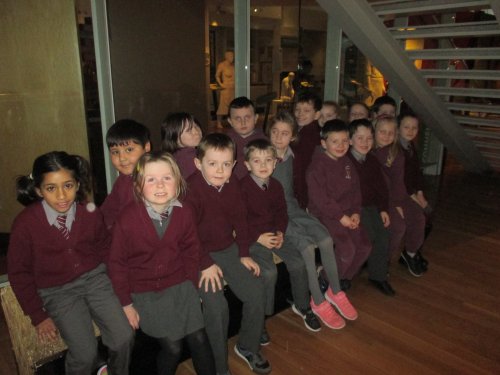 |
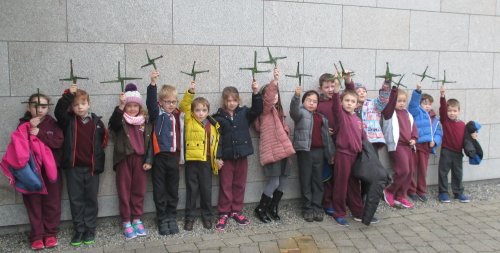 |
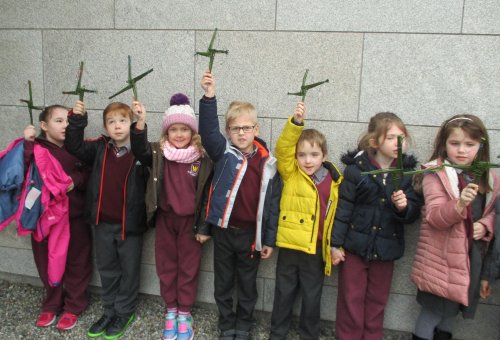 |
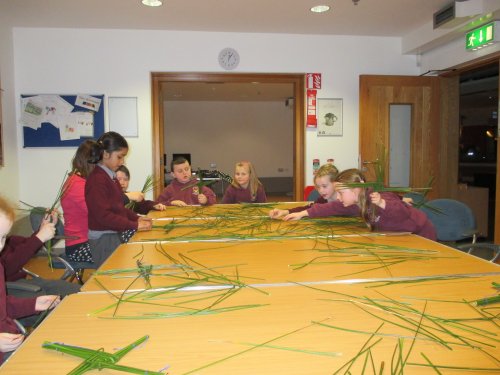 |
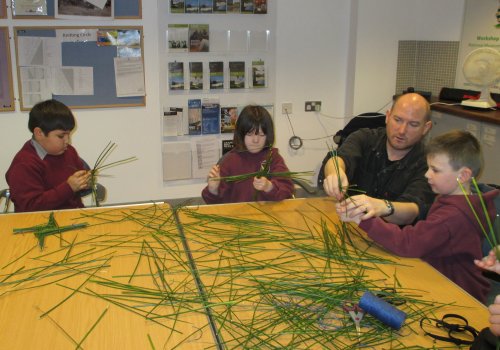 |
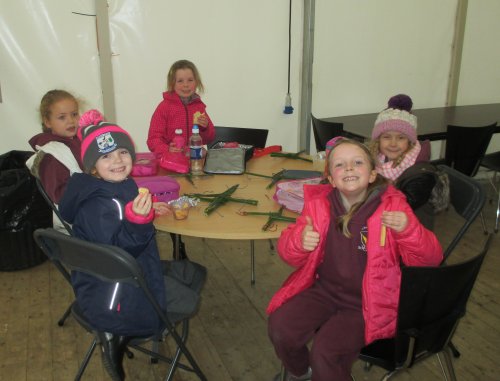
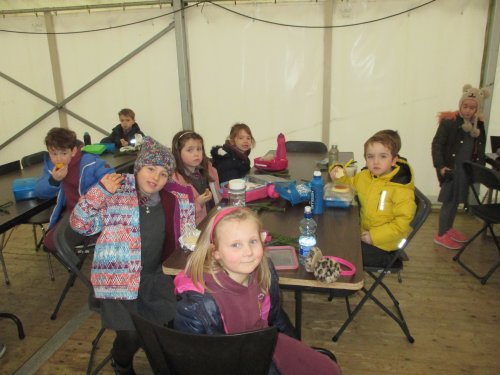
![]()
![]()
|
Mr. Duggan's 2nd Class had great fun learning all about volcanoes.
Senior Infants planted bulbs in class today. Soon they will have lovely flowers in their classroom.
October 2014 This year 1st Class are developing their own garden. They have been very busy clearing all the weeds from their little garden. Next,they put new soil and compost in the plots. Then they planted winter bedding plants and some bulbs. So far they have two flower plots, two hanging baskets and two window boxes to care for.
February Update!
All our lovely flowers are growing really well.
March Update! We are really proud of our beautiful garden!
|
||||||||||||||||||||||||||||||||||
Junior Infants planted bulbs. In spring they will have lovely flowers in their rooms.
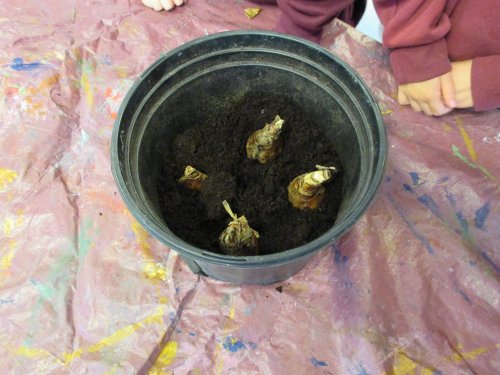
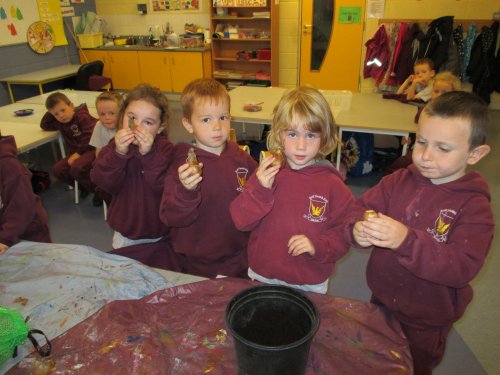 |
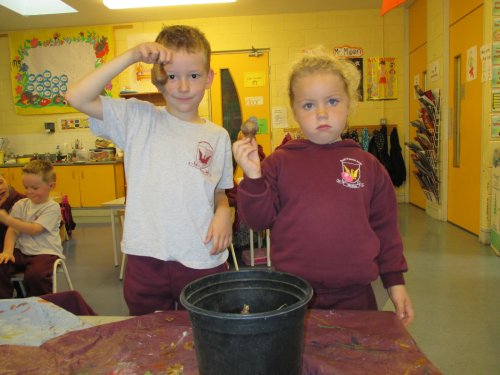 |
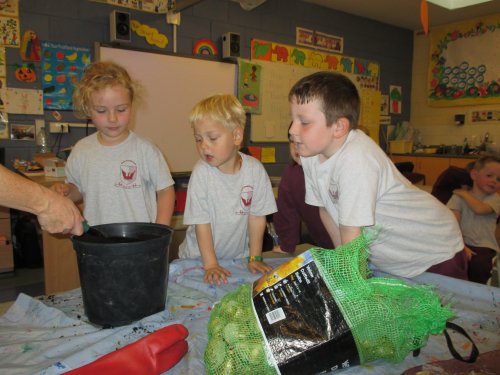 |
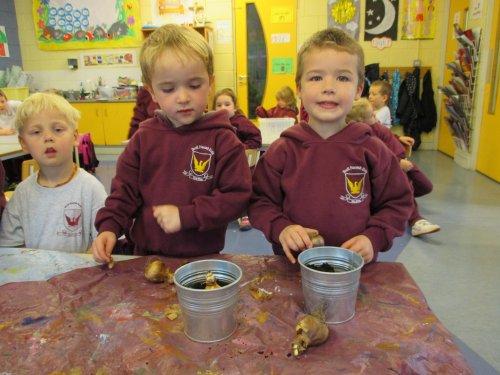 |
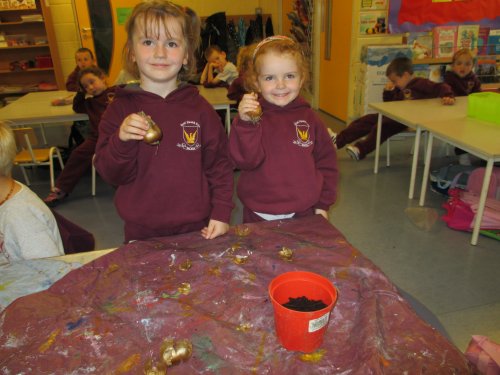 |
|
![]()
Autumn Nature Walks
Our Junior and Senior Infant classes went on autumn nature walks to Breaffy Woods.
First
Class also went to Breaffy woods to play in the autumn leaves
and to learn more about the woods in autumn.
Junior Infants
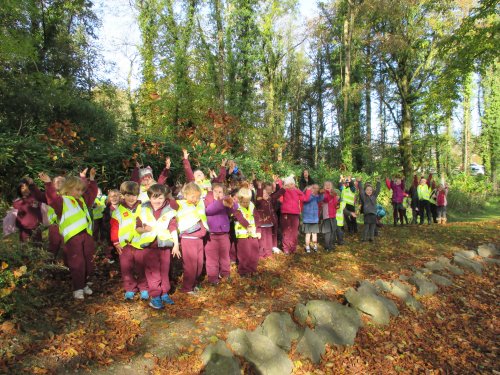
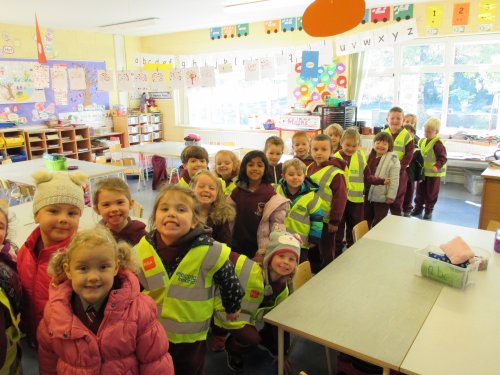 |
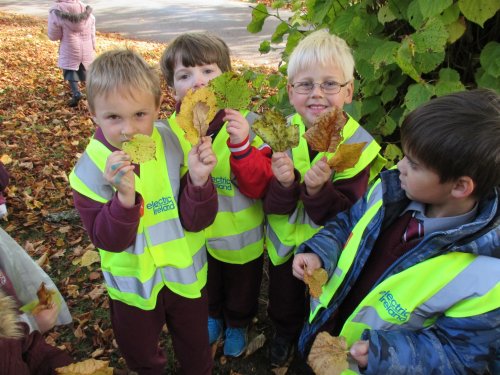 |
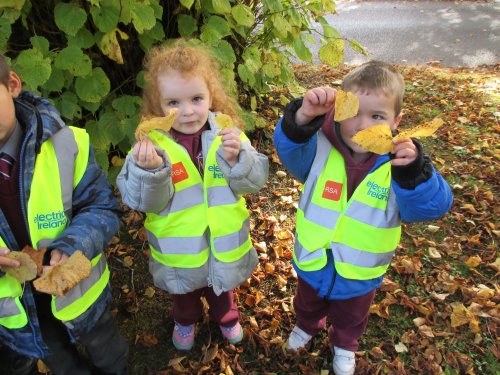 |
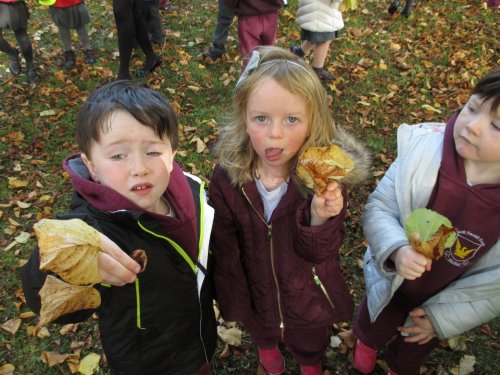 |
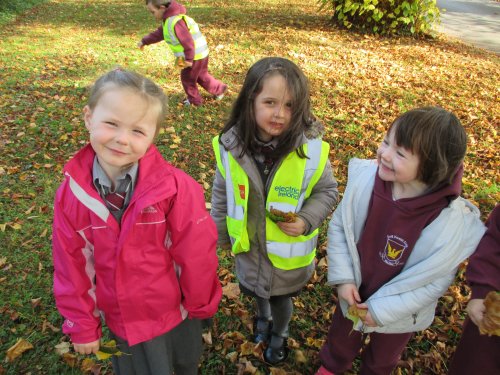 |
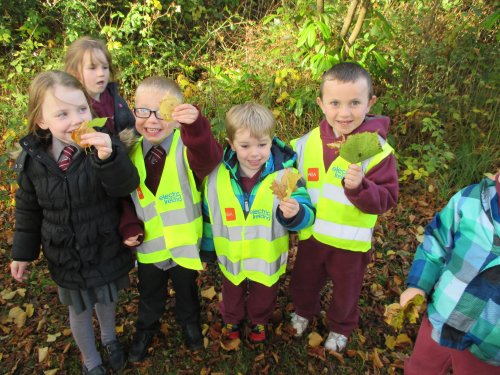 |
![]()
Senior Infants
|
Mrs. Mc Cormack's Senior Infants
|
Ms. Mannion's Senior Infants
|
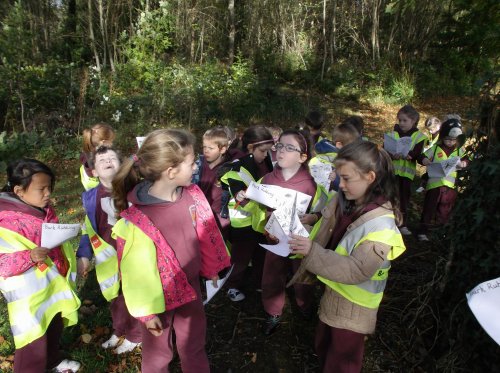 |
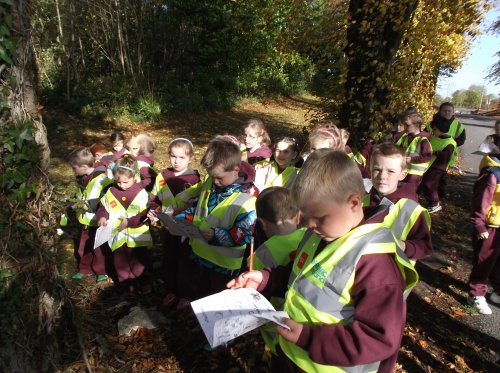 |
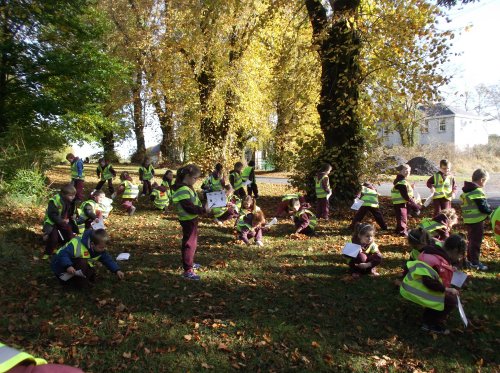 |
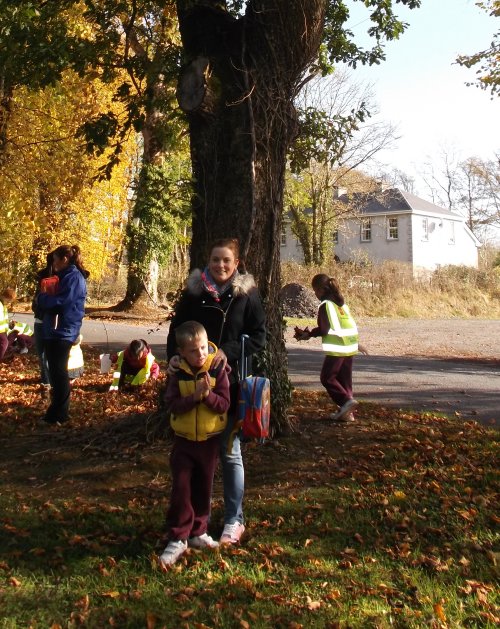 |
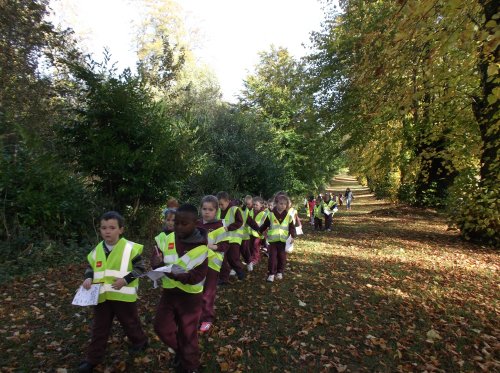 |
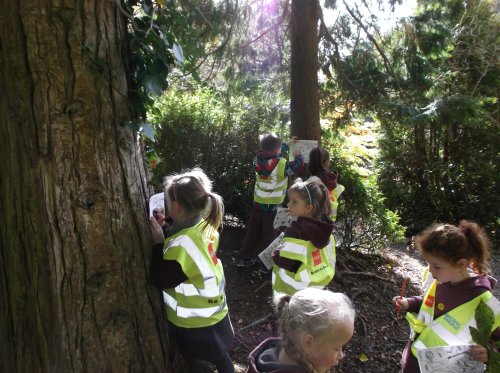 |
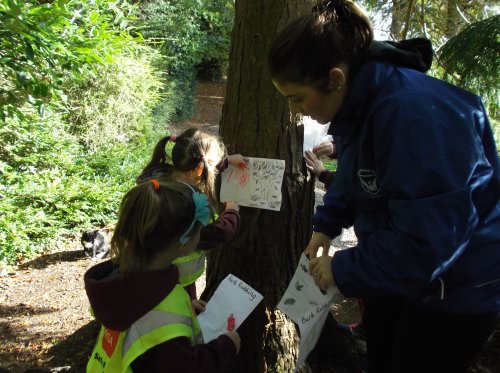 |
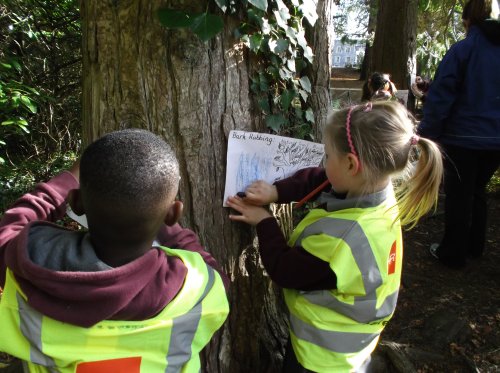 |
News 2011-2012
|
Nature Walks The Senior Infant Teachers, Ms. Mannion and Ms. O' Sullivan, designed a lovely nature trail for their classes. As part of their trail the children visited Breaffy Woods and completed their Nature Trail Booklet.
On their walk they met Mr. Duffy's 1st Class. They were also on a nature walk!
|
|
To commerate the 100th Anniversary of the sinking of the Titanic, a lot of the classes have been doing projects on the Titanic. Here are some pictures documenting the work done in Mrs. O' Shea's 4th Class.
|
|
Mr. Duggan's 3rd
Class have been making models of crannógs.
|
|
Greenwave Project 2012 Some of the classes are participating in this year's Greenwave Project. As part of the project pupils record daily temperatures, rainfall and wind speeds. These records are then entered on the Greenwave website as part of a national weather survey. Pupils also record sightings of tadpoles, birds, flowers. To learn more about the Greenwave Project 2012, visit their website www.greenwave.ie
Mr. Murphy's 5th Class are pictured above with the anemometers which they made in class. These instruments are used to measure wind speed. School Garden Update April 2012 Now
that April has arrived it is time to get back to our school garden.
School Garden Update March 2012 Now that spring
has arrived it is time to get back to our school garden.
|
|
4th Class Norman Castles, January 2012 Mrs. O' Shea's 4th Class have been studying the Normans.
Norman Castles Norman castles began as wooden forts and when they started wearing away the Normans started to build stone castles instead.
Stone Fort
Wooden Fort There was a mound made of soil and the top of this was flattened. This was called a motte. The building on top of the motte was called a keep. The bailey was a place in front of the motte. A strong wooden fence was built around the bailey and the keep. The animals, solders, servants and the blacksmith lived in the bailey. There was a ditch outside the fence. This was filled with water. This was called a moat. The stone castles were stronger and they took years to build. There was a drawbridge which was raised each night, this was made of wood. The battlements were on top of the keep. This was where the solders kept guard, watching out for any enemies.
Our class was divided into four groups. Two groups made wooden forts and two groups made stone forts.We made the motte with newspaper and we painted it. We made the keep from boxes which we wrapped in paper and painted. The wooden fence was made from a long strip of cardboard. We painted it brown and then stuck sticks in it. The stone castles had a strip of cardboard painted grey. The moat was painted blue and the land was painted green. The people who worked for the Lord lived in mud huts in the bailey.
How
to make a Norman Castle.
We painted the
cardboard we were going to place the castle on. We used carpet samples
on a roll to make the outhouses. The groups making stone castles painted
their castles grey. The groups making wooden castles painted their castles
brown. When we had completed our castles we labelled the objects on
them.
|
|
4th Class History Projects 1. Monasteries
Mr. Glennon's 4th Class have been learning all about monasteries.
Mr.
Glennon's Class have also been learning about historical items.
|
|
|
Mr. Glennon's
4th Class were very interested in teh Rugby World Cup.
|
|
|
|
|
|
Booster Station Walk. Friday, June 3rd, was a gloriously sunny day. The two fifth classes, along with their teachers, Mr. John Moran and Mr. Walsh climbed to the top of the booster station at Croaghmoyle, They all enjoyed the walk.
|
|
5th Class had an opportunity to learn how to make soup using organic vegetables. As the pictures below show they had a great time! |
|
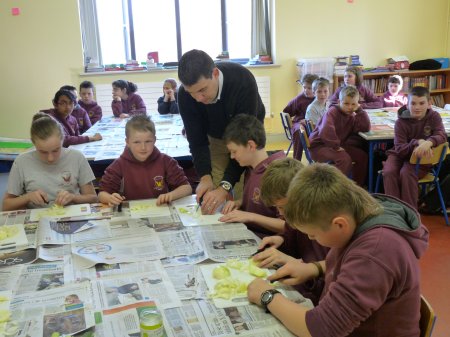 |
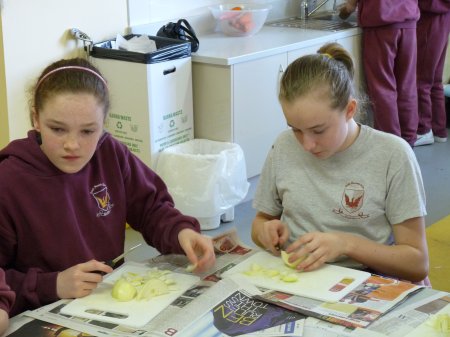 |
|
|
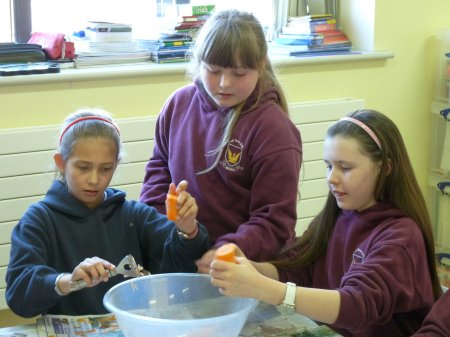 |
|
|
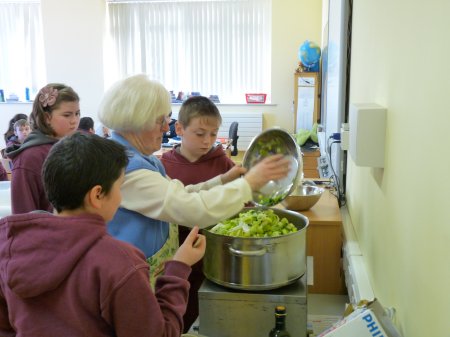 |
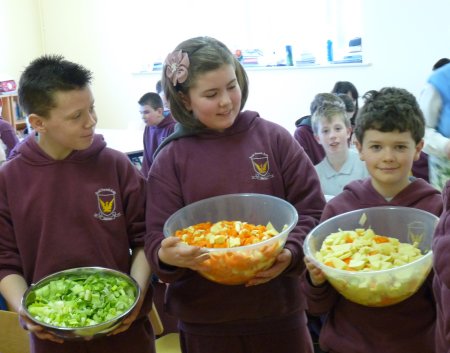 |
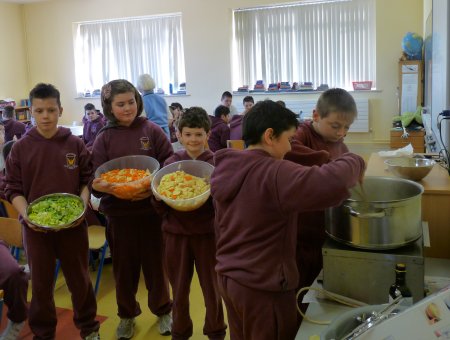 |
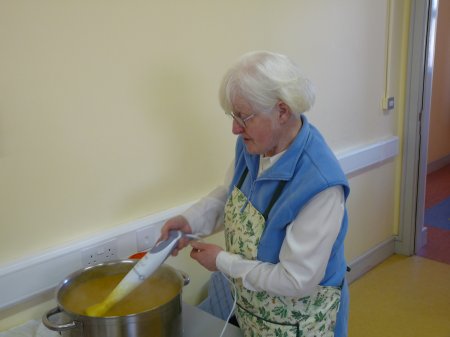 |
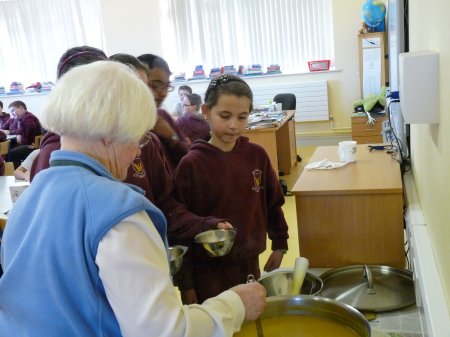 |
|
Mr. Walsh's 5th Class have been very busy develping our new school garden. This is being developed as one of our Green School Initiatives. A big thank you to all the people who have assisted in this project. Our Garden Diary. by Mr. Walsh's January
- Today Mr. Walsh announced that we are going to create a vegetabe garden,
and if we wanted the vegetable garden,we would all have to make an aerial
view map of the main places of our school, and where we wanted the vegetable
garden to be situated. First our teacher Mr. Walsh gave an example of
what he wanted, and we then got to work. My map showed the astro-turf
pitch, the school, the garden, the playground, the water tank ,and the
vegetable garden behind the astro-turf pitch. The winning maps were designed
by Alice and Michelle. Their maps were sent to Turlough house to be judged.
The winning prize received a free gardener, Kevin Gannon. February
- In February we didn`t do much just brainstorming, and waiting for our
application to be processed. March 10th
- Our class was very happy today when we recieved word that our class
won the map competition, and everyone was thinking what we should do first
for our new school garden. March 17th - Mr. Walsh went to Leitrim on St. Patrick's Day to get some red cedar planks of wood to make the vegetable beds, and next Monday Kevin and Mr. Walsh would screw the planks of wood together to make the vegetable beds. By Conor .
March 23rd
- Yesterday we all got to the garden quite early. We all marched up the
path, covered in sunscreen. Michael McHale had generously donated four
tons of soil to the garden. We were then put into groups, with five or
six in each group. Each team took it in turns to use the wheelbarrow to
fill the beds with topsoil. The teams without a wheelbarrow had to take
it in turns to use shovels. After we were finished we had to stick our
hands in the muck and pull out all the rocks and weeds. Most of us didn't
bring gloves, so we all had mucky hands. It was really fun none the less.
Even Mr Canny's class came to see us shoveling. We even had break-time
outside! We spent the whole day outside and had great craic. This morning
everyone has pains in their arms and legs, but it was all. worth it.
March 25th - Today we went out the garden. We again had to put our gear on. Such as spare foot wear, rain gear and gloves if we wanted. Kevin Gannon brought some Mypex and gravel, to the garden, to put down aroud the vegetable beds. We used the Mypex to keep the weeds away and to allow water down into the soil. We then had to put gravel around the vegetable beds to create a footpath.We then had to rake it out to level it. Only a few pupils from our class were allowed to participate in putting the Mypex and the footpaths down because many forgot to bring in their gear. We had a lot of fun ,although it was hard work. I'm sure it will pay off when the garden is finished. By Alice
April 14th
- On April fifth Frank Gibbons came into the school. He is Aoibheann and
Cormac's dad. He brought in beech trees so that we could plant a hedge.
We planted the hedge to protect the garden from the prevailing winds which
are the south-westerly winds. We also planted beech trees around the waste
disposal unit to make sure the garden looks nice. Frank Gibbons helped
us to plant some native trees like the oak, two mountain ash and a beech
tree. We all helped by digging up soil to make some room for the tree's
roots and planted them and ten we covered the roots with soil and made
sure it was well coveredhe soil and well compacted by standing firmly
down on t. It was fairly hard work. All of our hands were sore and mucky
from digging in the soil. It was pouring rain and we all had our jackets
on us as we shivered and worked our hardest. Some people (you could almost
consider them lucky) had to stay inside because they forgot their spare
shoes or jackets or anything else we needed on the day. After hours of
hard work outside, we all came inside, and warmed up and had a bite to
eat.
|
||||
 |
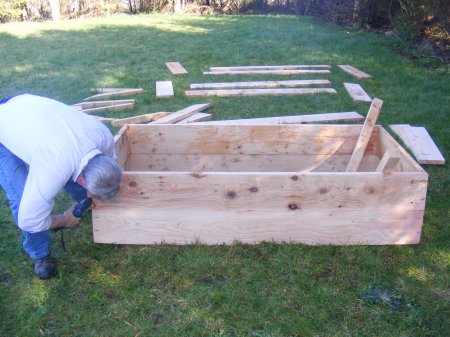 |
|||
|
|
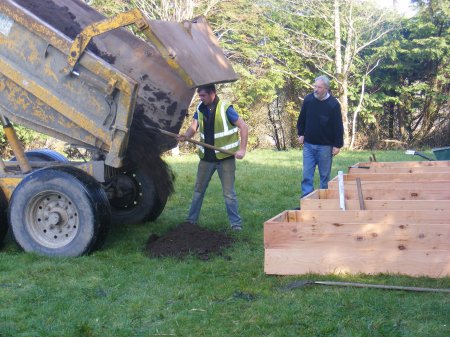 |
|||
|
|
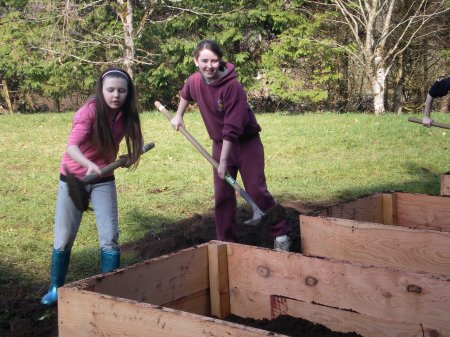 |
|||
|
|
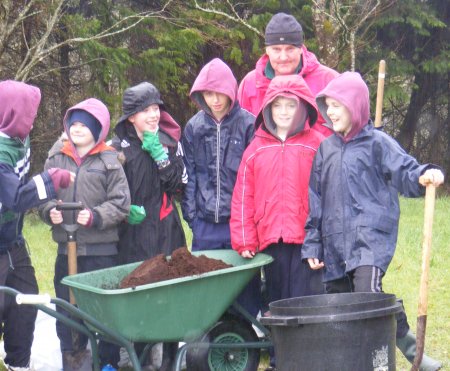 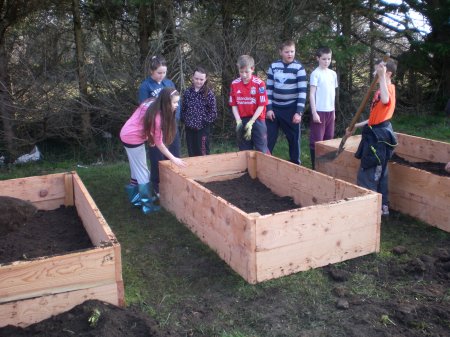 |
|
Planting Day! |
|
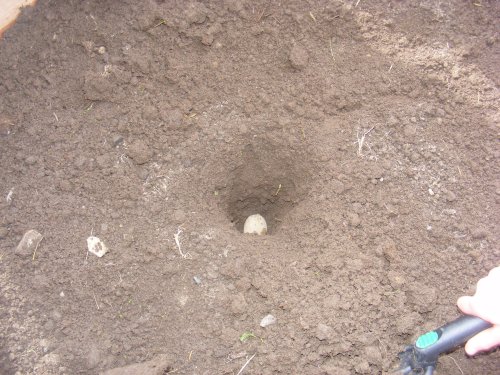 |
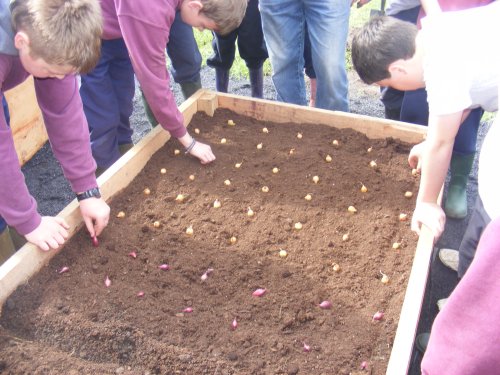 |
|
|
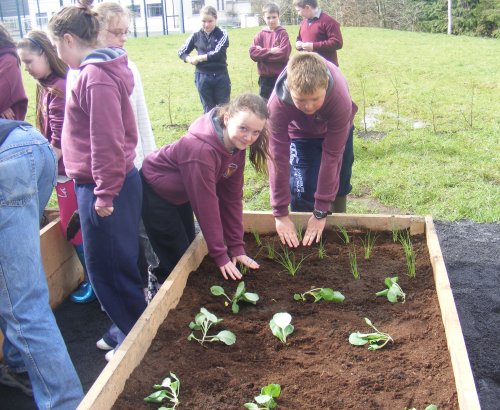 |
|
June Update. Work has progressed very well in our school garden. We have lots of vegetables growing including, potatoes, lettuce, onions, scallions and carrrots. Our hedge is thriving also.
|
|
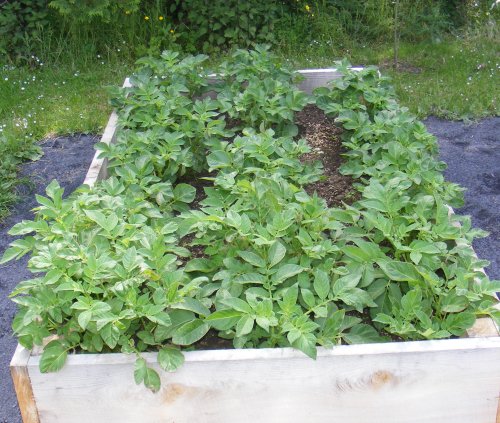 |
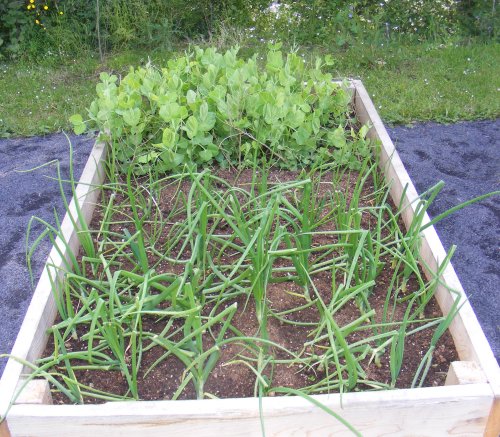 |
|
|
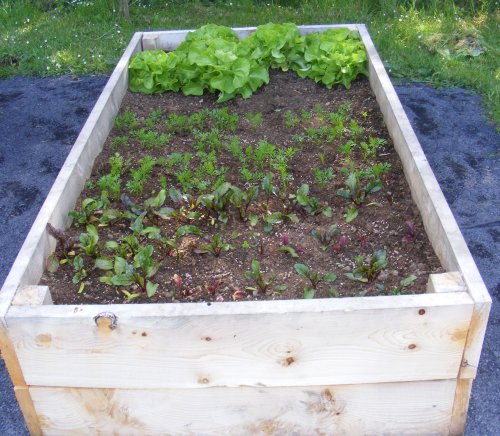 |
|
Important things to do next year Kevin Gannon will be willing to help if needs be. I have discussed planting some willow in the garden to create a willow hut. This needs to be planted in October some time. This hut could be used by classes wishing to do SESE classes or reading time when weather is warmer and fine. If the weather is as cold and snowy as this year we need to protect our new beech hedge and new fruit/berry bushes by placing some mypex/weed control cover on top of the beech hedge and a few small stones placed on top to keep in place. The mypex/weed control cover can be found with all the other garden implements in the small store room under the stairs at the back of the new extension. Weeding is vital to do when growth begins, between the beech hedge, fruit bushes and fruit trees and also in the vegetable beds. Crop rotation is vital to help improve soil conditions and to prevent the UG's (Unwelcome Guests, ie. Pest!) that attack the various vegetables from attacking our crops. Bed 1: Was potatoes, next year should plant peas, red onion and the ordinary onion. Bed 2: Was Peas, red onion, and ordinary onion, next year should be cabbage and spring onion. Bed 3: Was Cabbage and spring onion, next year should be lettuce, carrot and beetroot. Bed 4: Was Lettuce, carrot and beetroot, next year should be potatoes. Weeding the beds before planting the new crops in March 2012 should be step one. Once beds are weeded, planting should begin in early March, unlike this year where we had very cold conditions. Germinating trays can be used for growing seeds of lettuce, scallion, carrot, beetroot, cabbage, etc in the classrooms while Kevin Gannon plants some of his donated vegetables to start you off. It's important that we start learning how to grow these in the classrom on the window sills before transplanting them into the vegetable beds. This should start March first. The comfry plant (purple flower) makes great concentrate fertiliser juice. Cut down the plant about a third. Place in lukewarm water for 3-7days. The water should turn a dark black colour. This is the concentrate fertiliser juice which can be diluted with water. One pint of comfry should be enough to fertilse the four vegetable beds, but it may be no harm making two pints to be safe. Sea weed can also be placed on top of the vegetable beds in between the planted vegetables to add further nutrients to the soil. When crop one of lettuce, spring
onions etc are reading to be harvested, then do so and plant the germinated
seeds in their place. Berries and apples could be turned in to jams etc. Set up some groups/families in the locality to help with watering the plants over summer holidays.
|
|
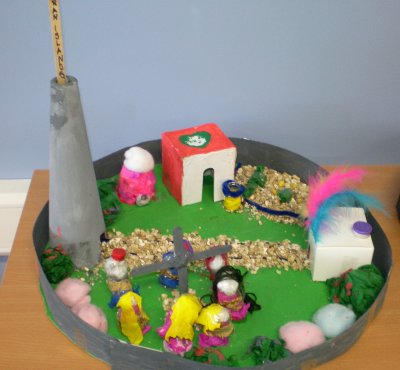 |
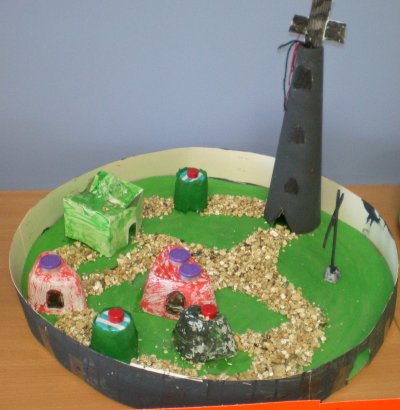 |
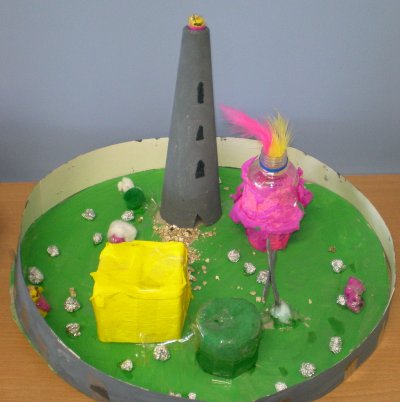 |
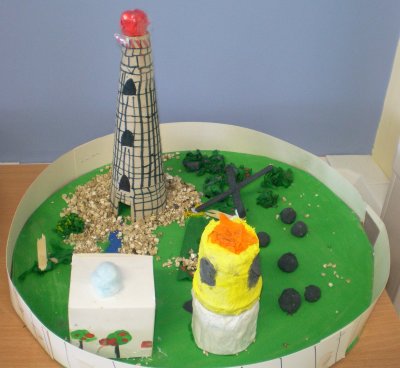 |
|
News from Africa, October 2010 Every Easter 6th Class in our school organise a sale of work and a talent show. They donate the mosey they raise to charity. Last Easter they donated money to an African Village. Lucy Gill, who used to work in Breaffy N.S., travelled to Africa. she sent us these pictures to show how our money was used. Here is an excerpt from the e mail Lucy sent us:
"I hope these photos from Africa will be useful seeing as 500 Euro came from Breaffy. I bought the cow, and shoes and copy books for 112 orphans. The cow is pregnant and will be added to the as yet, small herd. Eventually her milk will be given to orphans primarily and the rest will be added to the porridge given to all the other children every morning and her calf will also join the herd.. There are 1,112 children in 26 classes. All families are well below the poverty line and feeding the children is a priority. The shoes are a complete luxury and are a great advantage in the rainy season and the extreme heat when the hot ground burns the children's feet."
|
|
Every year our school hosts an ice-cream fun day to raise funds for Downs Syndrome Ireland. This year's event was, as ever, a great success.
To
Find out more follow this link.
Well done to the children whoi
represented our school in the recent PTAA quiz.
|
|
Every year we celebrate science week
in Breaffy N.S..
|
|
In March 6th Class participated in a cycling course. This excellent course taught the children how to cycle safely.
Horkan's Pet Shop recently brought some of their many
pets to visit our school.
In January 4th class had a wonderful opportunity to participate in a music workshop with the Whistleblast Quartet. They attended a number of workshops in early January.On January 10th we were all invited to attend their concert in Breaffy House Hotel. This event was thoroughly enjoyed by all who attended.
Mrs. O' Shea's class went for a walk in Breaffy Woods. They picked blackberrries. Caroline threw helicopters from the
Sycamore tree up in the air.
They saw a funny plant called "Lords
and Ladies"!
The children threw lots of leaves up
in the air. It was great fun.
Breaffy Woods is beautiful in autumn. |
|
Irish Monasteries
In the year 500 A.D monasteries were
all over Ireland and monks were the people who lived in monasteries. They
had lots of valuable things such as necklaces ,chalices and much more.
They had huts that were called bee hives and a prayer room and a guestroom
and they were made from stones and mud and they used a chisel to shape
the stones . The round tower was used for holding valuable things and
there was a bell that rang if the Vikings were coming or for prayer time.
A guard stayed up at the bell all night and day. And if he rang it everyone
would run to the round tower By Eamon Kelly. |
|
Irish Monasteries
A monastery is a round circular place with buildings
around it and it was made from stone. Inside a monastery there was a
church, a guesthouse and beehive huts. The monks wrote copies of holy
books in a Scriptorium. The monks had to pray each day and do their
own washing and cooking. No one helped them at all. When the Vikings
came to attack a round tower a monk would be at the top of the tower
to ring the bell to warn everybody they were coming. The Vikings came
from Norway, Sweden, Denmark, Iceland and Finland. The monks would protect
themselves because the windows were very narrow and it was hard for
the Vikings to shoot the arrows through the By Kevin Prendergast. |
|
|
|
Irish Monasteries
|
|
Irish Monasteries. *What is a monastery. *Life in a monastery. *Viking raids.
|
|
|
|
Irish Monasteries
By Emma Grealis 4th class. |
|
Irish Monasteries
What is a monastery? A monastery looked like a round fort with very high walls. On the inside you would find many buildings such as beehive - shaped huts, a church,a guesthouse and a metal worker's forge. There was also a refectory, where the monks ate all their meals, and a scriptorium, where the monks wrote and illustrated copies of the bible onto vellum (dried calf skin). Life in a monastery Being a monk was hard work. The monks had to rely on themselves for food,water and clothes. Some monasteries had schools and became great places to learn between the years AD 500-800.Because of the many wars in Europe, Ireland became known as the "The Land Of Saints And Scholars." The Vikings Come The Vikings first came to Ireland on Lambay Island, AD 795. There was one monastery on the island. The Vikings killed many of the monks. Because of the attacks the monks started buildings high, round towers. A guard was always situated at the top of the tower. When he saw the Vikings come he would ring a bell and the rest of the monks would climb up the tower taking all their treasures with them. The round towers had very small windows on the outside of the tower for the Vikings but at the monks side the windows were huge. Which made it almost impossible for the Vikings to shoot their arrows into the round tower but easy for the monks shoot out. This saved many very important manuscripts and riches. By Helen Murphy |
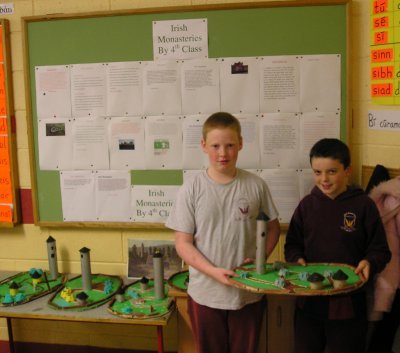 |
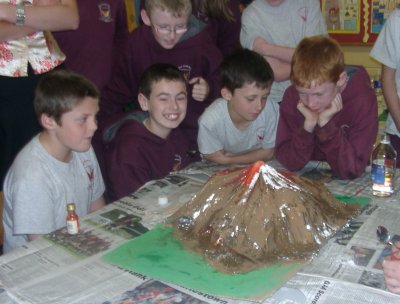 |
|
|
|
|
|
|
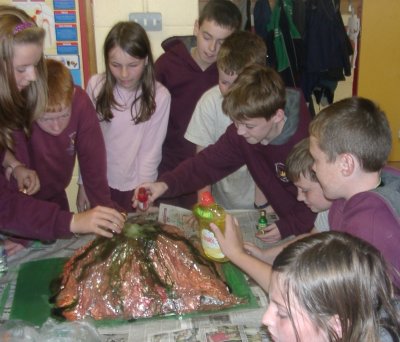 |
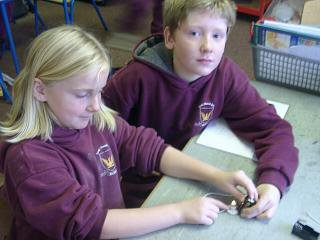 |
|
|
|
As part of Fire Safety
week 2005, the junior classes visited Castlebar Fire Stration. As you
can see the children from Junior Infants thoroughly enjoyed their day
out!
|
|
|
|
|
|
|
|
|
|
|
|
|
|
Green School Award for Breaffy N.S
Green Flag Renewal
January 2008
|
|
|
Click
here to see more Breaffy Pictures from our Green Flag Celebrations! In September 1996 it was decided that we should evaluate our school and make recommendations for making it a more environmentally friendly environment! The school was continuing to grow and while we already had a huge emphasis placed on the teaching of environmental studies we knew that without implementing certain actions, the pupils would not see the value or the connection between simple actions at home/school and the larger global environmental problems. To co-ordinate the work a Green Schools Committee was set up. This meets once a week with representatives from each class (1st to 6th class). The meetings are of an informal nature and are to review past decisions and implement new or existing projects. Each representative reports back to their class about the happenings of the meeting and is responsible for the implementation of the decisions in their particular classroom. A parent, the principal and a member of the teaching staff (also Green-Schools co-ordinator) also sit on the committee. Some of the projects included planting a school garden, making a nature trail, recycling cans, stamps, cards, batteries and paper, composting, making a butterfly garden and organising window boxes. We have won many prestigious environmental awards run by the Castlebar Tidy Towns Committee, Mayo County Council and the E.S.B. as a result. The Green Schools Co-ordinator, Ms. Fionnuala Tynan, and two children from the Green Schools Committee went to a celebration in the office of An Taisce in Dublin to receive the green flag from the Minister for Education. It was a great day. They were accompanied by Mayo County Council's Environmental Education Officer also. Finally, the flag raising day took place at the end of June. The whole of Breaffy Community celebrated with us. Members of Mayo County Council also joined us. We are very proud of our green flag. Click
here to see more Breaffy Pictures from our Green Flag Celebrations! |
|
|
Back
to top
|
|
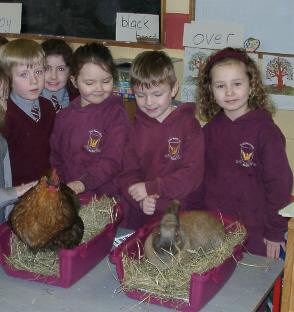 |
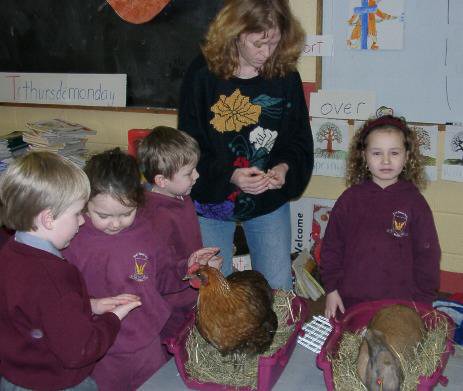 |
|
|
|
|
We all enjoyed the workshops on dinosaurs. We learned lots of things about dinosaurs.
|
|
|
|
|